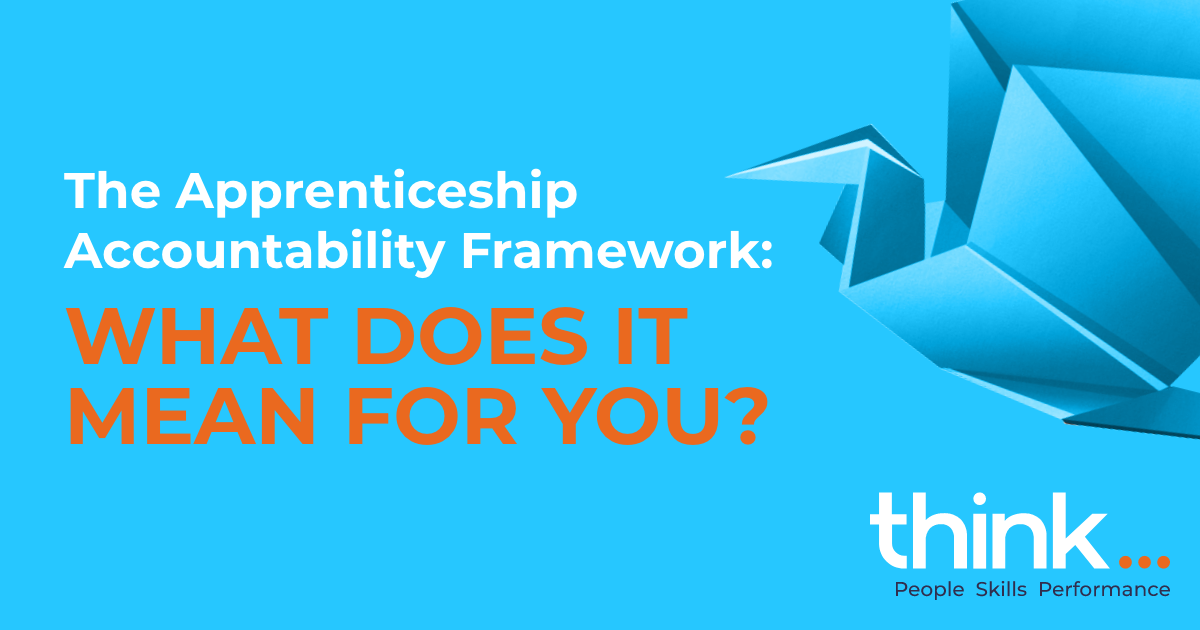What does the Apprenticeship Accountability Framework Mean for Providers?
The Apprenticeship Accountability Framework was introduced in April 2022 to monitor and measure provision for apprentices of all ages and in all settings.
Principles of the framework
It is overseen by the Educational and Skills Funding Agency (ESFA) and based on the following principles:
Data-driven: It introduced a broader, and in some case industry-specific, range of indicators to provide a more holistic and usable picture of what each provider delivers.
Risk-based: Data is reviewed to assess current delivery standards and identify trends that indicate potential problems occurring.
Self-improvement: Assessors contact providers where they have concerns, with a view to promoting early intervention with minimal disruption to apprentices.
Timeliness: The process is transparent, with data reviewed and shared with providers regularly to enable prompt action that prevents declining standards.
Proportionality: The wider range of measures allows for specific, targeted interventions that directly tackle the issue at hand
How will performance be measured?
The ESFA now evaluates each provider according to their sector rather than taking a one-size-fits-all approach. This ensures each provider is judged on criteria that makes a difference to their unique apprenticeship delivery. This also means there is no place to hide when it comes to assessment.
Some providers may face additional challenges owing to their cohort, or barriers to learning specific to their industry or learning environment. Where new providers are falling short of expectations, this will be considered when deciding whether DfE intervention is required to raise standards.
Assessment should be bespoke and individual within the boundaries of the framework.
Key performance indicators include:
Achievement rates
Apprentice retention and withdrawal rates
Amount of off-the-job training completed
Learners going beyond their planned end date
Breaks in learning
End point assessment data
What is an intervention?
In the first instance, providers will be provided with data that indicates a drop (or potential drop) in standards of provision and asked to take appropriate action to rectify or prevent the issue.
Where concerns persist or if the DfE decides it is necessary to ensure good quality delivery, intervention may be required.
These can include:
Implementation of a time bound improvement plan containing specific actions and targets.
Concerns about the provider’s competence flagged to Ofsted.
Request to cease using a specific subcontractor.
Suspension of new apprentices pending improvements.
Termination of contract for apprenticeship delivery.
What does it mean for providers?
Providers have long been judged in their achievement rate performance. While the new framework promises a more rounded assessment of a provider’s performance, its basket of measures also places them under greater scrutiny than before. As a minimum, providers must ensure ILR records are kept up to date, for example, if apprentices leave or take a break from learning (according to the new rules). This is to ensure the DfE data remains accurate and relevant.
Compliance with the framework and acting on assessments will be crucial in maintaining standards and retaining a place on the Register of Apprenticeship Training Providers (RoATP).
While this may cause some initial concern or disruption, it should be remembered that the framework is designed to ensure excellence, and help apprentices develop into rounded individuals with the skills necessary to thrive in their chosen career.
Providers, therefore, must arm themselves with detailed knowledge of the framework and, if they haven’t already, understand and continually monitor their performance against the framework’s key benchmarks. Now is the time to conduct a SWOT analysis of provision, review and implement changes where necessary to get ahead of the game and demonstrate that the framework has been embedded into improvement planning and delivery.
But for many providers, this new way of working will present new challenges. The concept of analysing the data and taking positive action to improve is a simple one. But what does this mean in practice? And how do you develop an effective strategy to ensure a consistent approach across the organisation?
You speak to an expert. Collaboration is the key here - combining the knowledge of educators with the experiences of strategic specialists across all areas of the spectrum is an effective way to take full advantage of this new opportunity. If you are interested in discussing how we can help your organisation, reach out to the Think team, we are here to help…



